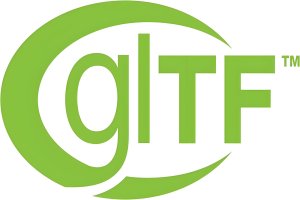Introduction to Titanium
Titanium is a strong, lightweight metal known for its excellent corrosion resistance, high strength-to-weight ratio, and ability to withstand extreme temperatures. These properties make it an essential material in industries such as aerospace, medical, and automotive manufacturing. One of the key advantages of titanium is its resistance to corrosion, which makes it an ideal choice for parts that are exposed to harsh environments, such as in marine applications or chemical processing. Custom machining allows manufacturers to create highly specific parts with precision, tailoring the material to meet the exact specifications required. Additionally, titanium is often used in CNC machined parts, where its durability and strength are leveraged for components that require both lightweight and high-performance capabilities.
Basic Properties of Titanium
Titanium is a unique metal known for its remarkable combination of strength, lightness, and resistance to corrosion. It is commonly used in various industries, from aerospace to medical implants, because of its advantageous properties. Here are some of the key properties of titanium:
| Property | Value |
|---|---|
| Density | 4.54 g/cm³ |
| Tensile Strength | 434 – 1,400 MPa (varies with alloy) |
| Melting Point | 1,668°C (3,034°F) |
| Young’s Modulus | 105 – 120 GPa |
| Thermal Conductivity | 21.9 W/m·K |
| Electrical Resistivity | 0.000428 Ω·cm |
| Corrosion Resistance | Excellent, especially in marine and chemical environments |
| Modulus of Resilience | 20 – 30 GPa |
| Hardness | Vickers: 160 – 500 (depending on alloy) |
Key Characteristics of Titanium:
- Strength-to-weight ratio: Titanium’s strength-to-weight ratio is much higher than that of steel, making it an ideal material for applications requiring lightweight, strong parts.
- Corrosion resistance: Titanium resists corrosion from a wide range of chemicals, seawater, and high temperatures, making it essential in marine, chemical, and industrial applications.
- Biocompatibility: Titanium is highly biocompatible, meaning it can be used in the human body without rejection, which is why it is used for medical implants like joint replacements.
- High melting point: Titanium has a high melting point, making it suitable for high-temperature environments like jet engines and spacecraft.
Magnetism Explained
Magnetism Explained
Magnetism is a fundamental physical phenomenon that has intrigued scientists and engineers for centuries. It is the force that acts on certain materials and causes them to attract or repel each other. This force is invisible, but its effects are very real and can be observed in a variety of ways. In this article, we will explore the basic concepts of magnetism, the types of magnetic materials, and the role it plays in both nature and technology.
What is Magnetism?
Magnetism is a force that can attract or repel materials, and it is caused by the motion of electric charges. It is one of the four fundamental forces of nature, along with gravity, electromagnetism, and the weak and strong nuclear forces. The most common form of magnetism that we encounter in our daily lives is the attraction between a magnet and ferromagnetic materials like iron.
How Does Magnetism Work?
At the atomic level, magnetism arises from the movement of electrons. Every electron has a property called spin, which gives it a magnetic moment. The alignment of these magnetic moments in a material determines whether that material is magnetic or not. When the electrons’ magnetic moments align in the same direction, the material becomes magnetized.
There are different types of magnetic materials:
- Ferromagnetic Materials (e.g., iron, cobalt, and nickel) are strongly attracted to magnets and can retain their magnetic properties once magnetized.
- Paramagnetic Materials (e.g., aluminum, platinum) are weakly attracted to magnets and do not retain magnetism once the external magnetic field is removed.
- Diamagnetic Materials (e.g., copper, graphite) are repelled by magnetic fields.
Magnetic Fields and Poles
Magnets have two poles: the North Pole and the South Pole. Opposite poles attract each other, while like poles repel. The space around a magnet, where its magnetic force can be felt, is called the magnetic field. The magnetic field is visualized by the lines that extend from one pole to the other, forming a complete loop.
Applications of Magnetism
Magnetism is not only a natural phenomenon but also a critical part of many technological advances:
- Electric Motors: Magnetism plays a crucial role in the operation of electric motors, which are used in everything from household appliances to industrial machinery.
- Magnetic Storage: Hard drives and magnetic tapes use magnetism to store data.
- MRI Machines: In medical imaging, magnets are used in MRI (Magnetic Resonance Imaging) machines to create detailed images of the inside of the body.
Magnetism is also found in the Earth’s core, where the movement of molten iron generates the planet’s magnetic field, protecting us from harmful solar radiation.
Is Titanium Magnetic?
Titanium is a widely used material, particularly in industries such as aerospace, medical, and automotive, due to its excellent strength-to-weight ratio, corrosion resistance, and biocompatibility. However, one question often comes up when people first encounter titanium: is titanium magnetic?
Understanding Magnetism and Materials
To answer whether titanium is magnetic, we first need to understand the basic principles of magnetism. Materials can be classified into three main categories based on their magnetic properties:
- Ferromagnetic Materials: These materials are strongly attracted to magnets. Iron, cobalt, and nickel are common examples.
- Paramagnetic Materials: These materials are weakly attracted to magnetic fields but do not retain magnetic properties when the external field is removed. Aluminum and platinum are examples of paramagnetic materials.
- Diamagnetic Materials: These materials are repelled by magnetic fields. Most materials, including copper and gold, are diamagnetic to some extent.
Is Titanium Magnetic?
Titanium is classified as a paramagnetic material. This means that while it is weakly attracted to magnetic fields, it does not retain any magnetism once the external field is removed. Titanium does not exhibit the strong magnetic properties that are seen in ferromagnetic materials like iron.
- Weak Magnetic Response: Titanium’s magnetic properties are very weak. It doesn’t get magnetized in the same way that iron does, making it a non-magnetic material in practical applications.
- Applications: Because of its non-magnetic nature, titanium is often used in applications where it’s essential that the material does not interfere with magnetic fields. This makes it ideal for use in medical implants, aerospace, and marine industries, where the material must not be influenced by magnetic fields.
Why is Titanium Non-Magnetic?
The reason why titanium is non-magnetic lies in its electron structure. The electrons in titanium do not align in such a way as to produce a net magnetic moment, which is why the material does not become magnetized under normal conditions. Unlike ferromagnetic materials, titanium’s electrons do not exhibit the same behavior that would cause a strong magnetic attraction.
Conclusion
So, to answer the question: No, titanium is not magnetic. Its weak magnetic properties do not have a practical effect, and titanium remains a non-magnetic material that is often used for applications where magnetism would be a hindrance. Despite not being magnetic, titanium’s other exceptional qualities make it a material of choice for a wide range of industries and applications.
Factors Influencing Titanium’s Magnetic Properties
Titanium is a non-magnetic material, often classified as a paramagnetic substance, which means that it is weakly attracted to magnetic fields but does not retain any magnetism after the magnetic field is removed. However, several factors can influence titanium’s magnetic properties, which play a role in how it behaves in specific environments or applications. Understanding these factors is crucial for industries that utilize titanium in sensitive applications such as aerospace, medical implants, and high-tech equipment.
1. Titanium’s Alloy Composition
One of the main factors influencing titanium’s magnetic properties is the alloy composition. Pure titanium itself is weakly paramagnetic, but titanium alloys may have different magnetic behaviors depending on the elements they are combined with. Common titanium alloys include:
- Grade 5 Titanium (Ti-6Al-4V): This is one of the most popular titanium alloys used in aerospace and medical implants. It contains aluminum and vanadium, and its magnetic properties can vary, though it remains largely non-magnetic.
- Grade 23 Titanium (Ti-6Al-4V ELI): Similar to Grade 5, this alloy is specifically designed for biomedical applications, but it can exhibit slightly different magnetic properties due to its refined composition.
In general, the addition of certain elements, such as iron, nickel, and cobalt, can increase the magnetic properties of titanium alloys. These elements may make the material behave more like a ferromagnetic material, but it will still not be as magnetic as iron or steel.
2. Titanium’s Crystal Structure
Titanium exists in two different crystalline forms:
- Alpha Phase: At lower temperatures, titanium exists in the hexagonal close-packed (HCP) crystal structure. In this form, titanium is paramagnetic, meaning it is weakly attracted to magnetic fields but does not retain magnetism.
- Beta Phase: When heated to higher temperatures, titanium undergoes a phase transformation to the body-centered cubic (BCC) structure. In this phase, titanium’s magnetic properties may slightly change, though it remains paramagnetic overall.
The transition between these two phases affects how titanium responds to magnetic fields. However, these changes are relatively minimal and do not result in significant magnetic attraction or permanent magnetization.
3. Temperature Effects on Titanium’s Magnetic Properties
Temperature plays a significant role in titanium’s magnetic behavior. At extremely low temperatures, materials may exhibit stronger magnetic properties due to the changes in electron alignment. However, in the case of titanium, the material remains weakly paramagnetic regardless of temperature. This means that even in extreme conditions, titanium’s magnetic properties will not change significantly.
4. Surface Treatment and Processing
The way titanium is processed can also have an effect on its magnetic properties. Certain surface treatments or coatings can potentially alter the way titanium interacts with magnetic fields. For example, anodizing titanium or adding a magnetic coating to its surface can introduce minor magnetic properties to the material, but the fundamental behavior of titanium as a paramagnetic material remains unchanged.
5. Presence of Impurities and Contaminants
Like many metals, titanium can be affected by impurities or contaminants that might be present during its processing. Elements such as iron, cobalt, or nickel, if introduced into titanium during the manufacturing process, may slightly alter its magnetic properties. These impurities could make titanium alloys behave more like ferromagnetic materials, although the change is usually minimal and does not make the material fully magnetic.
Conclusion
Titanium itself is weakly paramagnetic, but its magnetic properties can be influenced by several factors such as alloy composition, crystal structure, temperature, processing methods, and impurities. In practical terms, titanium remains a non-magnetic material, even if certain conditions or alloy modifications can slightly affect its magnetic response. This non-magnetic nature makes titanium ideal for applications where the presence of magnetism could interfere with sensitive equipment or processes.
Practical Implications of Titanium’s Non-Magnetic Nature
Titanium is a widely used material in various industries, and one of its key characteristics is its non-magnetic nature. This property can have significant practical implications, particularly in fields where magnetic interference is a concern or where materials must be non-magnetic for safety or performance reasons.
1. Aerospace and Aircraft Manufacturing
One of the primary industries that benefits from titanium’s non-magnetic properties is aerospace. Aircraft components must be made of materials that won’t interfere with sensitive electronic systems or navigation equipment. Titanium, with its non-magnetic nature, is ideal for such applications, ensuring that there is no unwanted interaction with the aircraft’s magnetic sensors or instruments.
2. Medical Implants and Devices
Titanium’s non-magnetic nature is also crucial in the medical field, especially for implants such as joint replacements or dental implants. Since many medical devices like MRI machines use strong magnetic fields, having non-magnetic materials like titanium helps ensure that implants won’t be affected by these fields, reducing the risk of complications or disruptions during scans or treatments.
3. Electronics and Sensors
In the electronics industry, where precision is key, titanium’s non-magnetic properties allow it to be used in sensitive equipment such as sensors and instruments. Since titanium does not interfere with magnetic fields, it can be used in enclosures, housings, or casings without the concern of distorting magnetic readings or affecting the performance of the equipment.
4. Security Applications
In security-related applications, such as in high-security environments or military gear, titanium’s non-magnetic properties are beneficial. For example, titanium is used in submarine hulls, where magnetic fields could potentially interfere with sonar and navigation systems. The material ensures that magnetic detection systems are not misled or confused by the material of the structure.
5. Non-Magnetic Tools and Equipment
Another area where titanium’s non-magnetic properties are advantageous is in tools and equipment used in environments with strong magnetic fields. For example, in certain manufacturing processes or research labs, non-magnetic tools are essential to prevent interference with sensitive machinery or experiments. Titanium is used for creating such tools due to its strength, durability, and resistance to corrosion, while still being non-magnetic.
Conclusion
Titanium’s non-magnetic nature opens up a range of practical applications across various fields. From aerospace to medicine and security, its ability to resist magnetic interference makes it a material of choice for many industries that require non-magnetic properties. Whether ensuring the integrity of sensitive equipment or creating safe, durable implants, titanium continues to prove its value as a versatile material.
Q&A on Titanium’s Magnetic Properties and Detection
itanium, a widely used metal in various industries, is known for its strength, lightweight nature, and resistance to corrosion. However, when it comes to its magnetic properties, there are some common questions that arise, especially given that not all metals behave the same way in the presence of a magnetic field. In this Q&A, we’ll address some of the most frequently asked questions about titanium’s magnetic properties and how it can be detected.
Q1: Is titanium magnetic?
Titanium itself is non-magnetic. This means that it does not attract or interact with magnetic fields like ferrous metals such as iron or steel. Titanium belongs to a class of metals known as paramagnetic materials, which have very weak magnetic properties. While it can be affected by extremely strong magnetic fields, it does not exhibit noticeable magnetic attraction under normal conditions.
Q2: Why is titanium non-magnetic?
Titanium is non-magnetic because it has a crystalline structure and electron configuration that doesn’t allow it to become magnetized under standard conditions. Unlike ferromagnetic materials, where the alignment of magnetic domains results in magnetic properties, titanium’s electron configuration prevents this kind of alignment, making it non-magnetic.
Q3: Can titanium be magnetized?
Although titanium is naturally non-magnetic, it is possible to magnetize it under extreme conditions. For example, if titanium is subjected to a very high magnetic field, such as those created in specialized laboratory conditions, its weak magnetic properties can be induced temporarily. However, this effect is not significant enough for titanium to be considered magnetic in most applications.
Q4: How can titanium be detected in a magnetic field?
Since titanium is non-magnetic, it won’t show up on standard magnetic detectors. However, if titanium is mixed with ferromagnetic materials, such as in a composite material, magnetic detection methods can be used to identify the magnetic elements. X-ray or MRI scanning can also be employed in medical and industrial settings for detecting titanium structures when necessary.
Q5: How is titanium used in industries that require non-magnetic materials?
Titanium’s non-magnetic property makes it ideal for use in industries that rely on the integrity of magnetic fields. For example, in the aerospace industry, titanium is used for manufacturing parts in aircraft, as it doesn’t interfere with sensitive equipment like GPS and magnetic navigation systems. Similarly, in the medical field, titanium is used in implants and devices like MRI-compatible joint replacements.
Q6: Does titanium affect the accuracy of MRI scans?
No, titanium does not interfere with the accuracy of MRI scans. Because of its non-magnetic properties, titanium is commonly used in medical implants and devices that will be exposed to MRI machines. This ensures that MRI images are clear and unaffected by the implant material.
Q7: How can the magnetic properties of titanium be tested?
The magnetic properties of titanium can be tested using a magnetometer. This tool can detect whether a material responds to a magnetic field. For titanium, the results would show no significant attraction to the magnet, confirming its non-magnetic nature. Specialized tests might also be used to measure any weak magnetic response under extreme conditions.
Other Articles You Might Enjoy
- Mastering Titanium Alloy Machining: Challenges, Techniques, and Industry Applications
Chapter 1: Introduction When I first began working with Titanium Alloy, I was struck by how unique they were. These materials combine high strength, low weight, and exceptional resistance to…
- Titanium Color and CNC Machining Techniques Explained
Introduction: The Appeal of Titanium Color in CNC Machining Titanium has always fascinated industries for its lightweight yet strong properties, but its natural titanium color adds an extra layer of…
- Does Titanium Rust? Exploring the Corrosion Resistance of Titanium in CNC Machining
Introduction: Understanding Titanium’s Properties What is Titanium? Titanium is a metal that has gained significant attention in engineering, aerospace, medical, and industrial applications due to its unique properties. As a…
- Comparing Tungsten vs Titanium for Custom Parts with CNC Technology
Introduction In high-performance industries such as aerospace, medical devices, automotive, and defense, selecting the right material is crucial to meeting specific application needs. Two materials that often stand out due…
- Is Titanium Lighter Than Aluminum in the World of CNC Machining
Introduction In the world of manufacturing, particularly in CNC machining, the choice of material plays a pivotal role in the performance, cost, and durability of parts. Among the most commonly…
- Machining Techniques for Parts: Unlocking CNC and Cutting-Edge Tech
I. Introduction I remember the first time I realized how critical machining is to modern manufacturing. I was interning at a small shop, watching a CNC machine carve intricate features…
- Is titanium dioxide safe? what is titanium ?
Introduction to Titanium Dioxide Titanium dioxide, a white pigment that is chemically inert, stable, and nontoxic, boasts widespread use in various industries due to its ability to impart brightness and…
- Everything You Should Know About CNC Machining Titanium
Titanium (Ti), a shiny metal, has a high resistance to corrosion and high strength. Titanium is extremely lightweight and biocompatible. Ti is extracted from primarily unconsolidated sediments. Depending on the…






